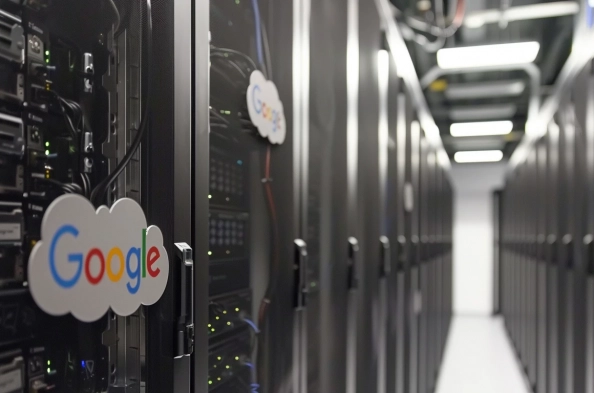As the fusion of artificial intelligence and cybersecurity advances, Google Cloud’s recent report titled ‘Cybersecurity Forecast 2025’ has emphasized the potential for a dramatic surge in AI-driven cyberattacks by 2025. This groundbreaking report highlights a variety of challenges and opportunities for the cybersecurity industry as it navigates the increasing integration of AI into potential threats. The growing accessibility of AI and large language models (LLMs) is expected to arm threat actors with highly sophisticated tools to perpetrate more convincing phishing, SMS, and social engineering attacks. This warning signals a pressing need for organizations worldwide to ramp up their cybersecurity measures.
AI and the Rise of Cyberattacks
Increased Frequency and Sophistication of Attacks
One of the crucial forecasts of the Google Cloud report centers on the anticipated increase in the frequency and sophistication of cyberattacks as AI capabilities become more widely accessible. The report foresees that 2025 will be a critical turning point for AI in cybersecurity, ushering in an era of semi-autonomous security operations with the ultimate goal of achieving full autonomy in the near future. This transition calls for a concerted effort to develop and implement advanced security protocols to counteract the sophisticated attacks that will likely emerge.
Furthermore, the report underscores the persistent threat of ransomware attacks and data theft extortion, which continue to be destructive and costly for organizations. These types of attacks are expected to grow in prevalence as attackers leverage AI to identify and exploit vulnerabilities more effectively. Moreover, hybrid environments, which combine on-premises and cloud-based infrastructure, are particularly susceptible to breaches. The complexity of managing and securing such environments opens them up to new types of attacks that traditional security measures may not be fully equipped to handle.
The Impact of Deepfakes and Custom Malware
An additional concern highlighted by the report is the potential misuse of deepfake technology for malicious purposes, including fraud, identity theft, and vulnerabilities research. Deepfakes, which use AI to create realistic but fabricated images, videos, or audio recordings, pose a substantial threat as they can be utilized to deceive individuals and organizations. The report warns that deepfakes could become a common tool for attackers, making it increasingly difficult to discern legitimate communications from fraudulent ones.
In response, Google Cloud researchers advocate for the widespread adoption of endpoint detection and response (EDR) platforms to enhance cybersecurity defenses. However, even as defenses improve, there is an ongoing risk that threat actors will develop custom malware designed to penetrate these systems. Embedded systems, which are often used in critical infrastructure and industrial control systems, may be particularly vulnerable to such targeted attacks. The stakes are higher than ever as the cybersecurity landscape evolves to counter these sophisticated threats.
The Future of Cybersecurity
Growth and Innovation in Cybersecurity Industry
Looking ahead, the Google Cloud report anticipates significant growth and innovation within the cybersecurity industry as it responds to the escalating threats posed by AI-driven attacks. One key area of development is the broader adoption of cloud-native security information and event management (SIEM) solutions. These advanced systems are designed to provide real-time analysis of security alerts, enabling organizations to detect and respond to threats more quickly and effectively. This evolution in security technology is essential for staying ahead of increasingly sophisticated attackers.
The report also predicts an expansion in the use of cryptocurrencies and the development of Web3 technologies. While these advancements offer exciting new opportunities, they also introduce potential vulnerabilities that could be exploited by cybercriminals. As the use of decentralized applications and blockchain technology grows, the need for robust security measures to protect these platforms will become ever more critical. Continuous monitoring, threat intelligence, and adherence to evolving regulations are vital components of a comprehensive cybersecurity strategy in this rapidly changing landscape.
Proactive Measures and Regulatory Compliance
As the convergence of artificial intelligence and cybersecurity progresses, Google Cloud’s recent report titled ‘Cybersecurity Forecast 2025’ underscores the potential for a significant rise in AI-powered cyberattacks by 2025. This pioneering report outlines various challenges and opportunities for the cybersecurity sector as it contends with the growing integration of AI into potential threats. The increasing availability of AI and large language models (LLMs) is anticipated to equip threat actors with advanced tools, enabling them to execute more convincing phishing, SMS, and social engineering attacks. This cautionary message highlights an urgent need for organizations around the globe to strengthen their cybersecurity defenses. Companies must prioritize enhancing their security frameworks, investing in AI-based protective measures, and ensuring that their employees are well-trained to recognize and respond to sophisticated attacks. By anticipating these evolving threats and proactively addressing them, businesses can better safeguard their data, systems, and overall digital infrastructure against the looming AI-driven cyber risks.






